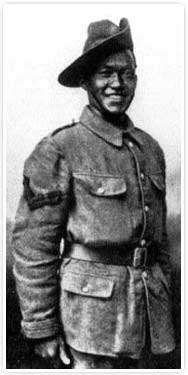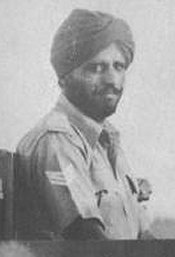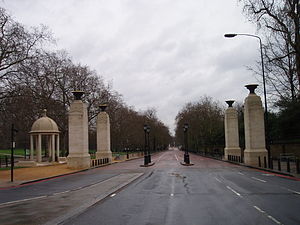Planning, construction and inauguration
The plans for the memorial were made by the Memorial Gates Trust. As inscribed on the memorial, the inaugural patron of the Trust was Prince Charles, and the inaugural trustees were Lord Inge, Lord Sandberg, Viscount Slim, Neil Thorne, Lord Weatherill, Baroness Flather, Khalid Aziz, Lakshmi Niwas Mittal, Harpinder Singh Narula (chair), Gulam Noon, and Anwar Pervez.
The architects were Liam O'Connor Architects and Planning Consultants. Funding came from the National Lottery, provided by the Millennium Commission. Construction of the Memorial Gates began on 1 August 2001, with an inscription commemorating this event on the first stone to be laid; the inscription states that the stone was laid by the Queen Mother. The company contracted to build the memorial was Geoffrey Osborne Ltd and the stonemasons were CWO Ltd.
The pillars are made from Portland Stone, they are topped by a bronze urn and gas flames, which are lit on special occasions such as Remembrance Sunday, Armistice Day and Commonwealth Day.
The Memorial Gates were inaugurated on 6 November 2002 by Queen Elizabeth II with an inscription stating that this took place in the Golden Jubilee year of her reign.

The Indian Army during World War II, a British force also referred to as the British Indian Army, began the war, in 1939, numbering just under 200,000 men. By the end of the war, it had become the largest volunteer army in history, rising to over 2.5 million men in August 1945. Serving in divisions of infantry, armour and a fledgling airborne force, they fought on three continents in Africa, Europe and Asia.
Sher Bahadur Thapa VC was a Nepalese Gurkha recipient of the Victoria Cross, the highest and most prestigious award for gallantry in the face of the enemy that can be awarded to British and Commonwealth forces.

Khudadad Khan, VC was a Pakistani recipient of the Victoria Cross, the highest award for gallantry in the face of the enemy that can be awarded to British and Commonwealth forces. During the First World War, on 31 October 1914 at Hollebeke, Belgium, while serving in the British Indian Army, he performed an act of bravery for which he was awarded the Victoria Cross.

The Maha Vir Chakra (MVC) is the second highest military decoration in India, after the Param Vir Chakra, and is awarded for acts of conspicuous gallantry in the presence of the enemy, whether on land, at sea or in the air. It replaced the British Distinguished Service Order (DSO). The medal may be awarded posthumously.
Gabar Singh Negi VC was a soldier in the British Indian Army during the First World War and a recipient of the Victoria Cross, the highest and most prestigious award for gallantry in the face of the enemy that can be awarded to British and Commonwealth forces.

Darwan Singh Negi VC was one of the first Indian soldiers to be awarded the Victoria Cross (VC), the highest and most prestigious award for gallantry in the face of the enemy that can be awarded to British and Commonwealth forces.

Kulbir Thapa Magar VC was the first Nepalese Gurkha recipient of the Victoria Cross, the highest and most prestigious award for gallantry in the face of the enemy that can be awarded to British and Commonwealth forces.

Major Parkash Singh VC was a Sikh Indian recipient of the Victoria Cross, the highest and most prestigious award for gallantry in the face of the enemy that can be awarded to British and Commonwealth forces.

The 4th Gorkha Rifles or the Fourth Gorkha Rifles, abbreviated as 4 GR, is an infantry regiment of the Indian Army comprising Gurkha soldiers of Indian Gorkha or Nepalese nationality, especially Magars and Gurungs hill tribes of Nepal. The Fourth Gorkha Rifles has five infantry battalions. The regiment was raised in 1857 as part of the British Indian Army. In 1947, after India's independence, the Fourth Gurkha Rifles became part of the Indian Army as the Fourth Gorkha Rifles.

The Jat Regiment is an infantry regiment of the Indian Army, of which it is one of the longest-serving and most decorated regiments. The regiment has won 19 battle honours between 1839 and 1947, and post-independence it has won five battle honours, including 2 Victoria Cross, 2 George Cross, 8 Mahavir Chakra, 8 Kirti Chakra, 34 Shaurya Chakras, 39 Vir Chakras and 253 Sena Medals. During its 200-year service history, the regiment has participated in various actions and operations in India and abroad, including the First and the Second World Wars. Numerous battalions of the Jat Regiment, including the 14th Murray's Jat Lancers, fought in the First World War.

Chhetri, historically called Kshettriya or Kshetriya or Khas are Nepali speaking Rajputs of Khas community, some of whom trace their origin to migration from medieval India. Chhetri was a caste of administrators, governor and military elites in the medieval Khas Kingdom and Gorkha Kingdom. The nobility of the Gorkha Kingdom mainly originated from Chhetri families. They also had a strong presence in civil administration affairs. The bulk of prime ministers of Nepal before the democratization of Nepal belonged to this caste as a result of the old Gorkhali aristocracy. Gorkha-based aristocratic Chhetri families included the Pande dynasty, the Basnyat dynasty, the Kunwar family, and the Thapa dynasty,.

Arnos Vale Cemetery, in Arnos Vale, Bristol, England, was established in 1837. Its first burial was in 1839. The cemetery followed a joint-stock model, funded by shareholders. It was laid out as an Arcadian landscape with buildings by Charles Underwood. Most of its area is listed, Grade II*, on the Register of Historic Parks and Gardens of special historic interest in England.
The 39th Garhwal Rifles was an infantry regiment of the British Indian Army.

The 8th Punjab Regiment was a regiment of the British Indian Army from 1922 to 1947. It was transferred to Pakistan Army on Partition of India in 1947 and merged with the Baluch Regiment in 1956.

The Victoria Cross (VC) is the highest and most prestigious decoration of the British honours system. It is awarded for valour "in the presence of the enemy" to members of the British Armed Forces and may be awarded posthumously. It was previously awarded by countries of the Commonwealth of Nations, most of which have established their own honours systems and no longer recommend British honours. It may be awarded to a person of any military rank in any service and to civilians under military command. No civilian has received the award since 1879. Since the first awards were presented by Queen Victoria in 1857, two thirds of all awards have been personally presented by the British monarch. The investitures are usually held at Buckingham Palace.

The Neuve-Chapelle Indian Memorial is a World War I memorial in France, located on the outskirts of the commune of Neuve-Chapelle, in the département of Pas-de-Calais. The memorial commemorates some 4,742 Indian soldiers with no known grave, who fell in battle while fighting for the British Indian Army in the First World War. The location of the memorial was chosen because of the participation by Indian troops at the Battle of Neuve Chapelle.

Indian Gorkhas, also known as Indian Nepalis, are an ethno-cultural group native to India, who speak Nepali as a common language. They inhabit mainly the states of Sikkim, West Bengal, Northeast and Uttarakhand, including their diaspora elsewhere in India and abroad. The modern term "Indian Gorkha" is used to differentiate the Nepali language Speaking Indians from Nepalis.
"Melancholy" is an environmentally-themed song sung by 365 Nepali artists. This song was intended to promote an environmental message by breaking the Guinness World Records for "Most Vocal Solos in a Song Recording", which it successfully did. It was written, music composed and directed by environmentalist Nipesh Dhaka. The song was recorded as a single on 19 May 2016. The recording sessions were inaugurated by Prime Minister Khadga Prasad Oli at 8 am and continued until 6 pm. The song was released on 2 September 2017 by President Bidya Devi Bhandari at Army Officer's Club, Kathmandu.




















